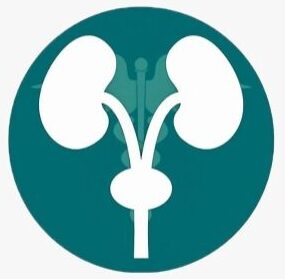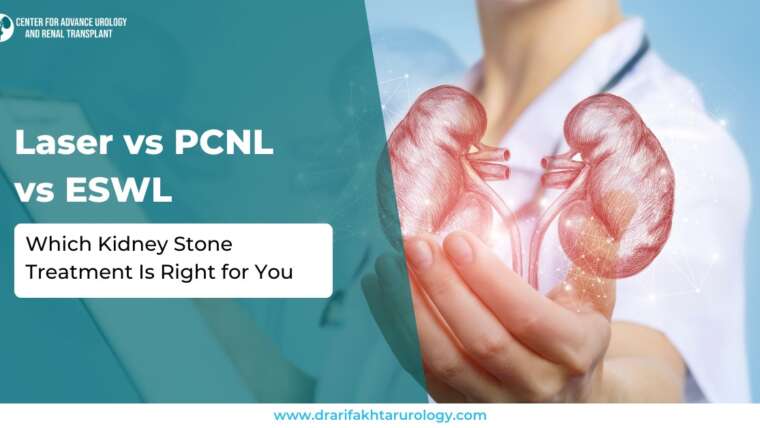Kidney stones are a common urological condition that can strike unexpectedly and cause intense discomfort. When it happens, the immediate question that arises is whether to wait for the stone to pass naturally or to consider kidney stone surgery. Both routes are valid under different circumstances, but how does one decide what’s best?
This blog provides a detailed overview of the differences, risks, and outcomes of both options. By the end, readers will have a clear understanding of modern kidney stone treatment strategies and when kidney stone removal becomes necessary.
Understanding Kidney Stones and Their Impact
Kidney stones are hard mineral deposits formed inside the kidneys due to imbalances in urine content. They vary in kidney stone size, shape, and composition. Some may pass without issue; others can lead to severe blockages and pain.
Natural Passing of Kidney Stones
Many small kidney stones can be passed through urine, especially when the size is under 5 mm. Drinking plenty of fluids, managing kidney stone pain relief, and following medical advice can support this process.
When Is It Possible to Pass Them Naturally?
In cases of smaller stones, especially those located lower in the urinary tract, the chances of natural passage are higher. The body, aided by hydration and medication, may clear the obstruction without any procedural intervention.
Surgical Intervention: When Is It Needed?
While natural methods work for some, not all stones exit the body so easily. Larger stones, or those stuck in problematic locations, often require kidney stone surgery. This option is guided by several factors, including kidney stone size, frequency of symptoms, and whether complications like infection or kidney swelling are present.
When is kidney stone surgery needed?
- Stone size greater than 6 mm
- Unbearable pain that doesn’t subside
- Urinary tract infection due to obstruction
- Persistent vomiting and inability to retain fluids
- Damage to kidney function
Types of Kidney Stone Surgery
There are several methods for kidney stone removal, depending on the case severity:
Ureteroscopy
A thin tube is inserted through the urethra to break or extract the stone. Commonly used for medium-sized stones, this approach has a relatively short recovery time.
Shock Wave Lithotripsy (SWL)
High-energy shock waves break stones into fragments that can be passed naturally. It’s non-invasive and works best for stones located in the kidney or upper ureter.
Percutaneous Nephrolithotomy (PCNL)
Reserved for large or complex stones, this procedure involves making a small incision in the back to directly access and remove the stone.
These procedures are often recommended when non-surgical kidney stone treatment methods have failed or are unsuitable.
Natural Passing vs. Surgical Removal: A Direct Comparison
| Aspect | Natural Passing | Kidney Stone Surgery |
| Stone Size | Best for <5 mm | Required for >6 mm or obstructive stones |
| Pain Level | Can be intense and prolonged | Controlled under anesthesia |
| Recovery | No downtime, but discomfort varies | Short hospital stay or outpatient procedure |
| Effectiveness | Depends on size, location, and hydration | High, especially with targeted techniques |
| Risk of Recurrence | Present | Present; prevention measures still needed |
This comparison outlines how small vs. large kidney stones determine the treatment approach. While small stones may resolve on their own, larger ones often require medical intervention.
What About Pain and Prevention?
Whether natural or surgical, both methods involve addressing kidney stone pain relief and future prevention. Adequate hydration, dietary changes, and managing risk factors are essential parts of any kidney stone treatment plan.
The Role of Diagnosis in Treatment Planning
Imaging techniques such as CT scans and ultrasounds help in understanding kidney stone size, composition, and location. This information guides whether the doctor recommends Ureteroscopy vs. natural passing, helping avoid unnecessary procedures.
Is Surgery Always the Last Option?
Not necessarily. Modern surgical methods are minimally invasive and often preferred when stones show signs of complications or prolonged discomfort. In some cases, kidney stone surgery is safer and more effective than waiting it out.
However, for many patients, especially those with stones under 5 mm, advice on how to pass kidney stones naturally remains the first line of action—paired with medical monitoring.
Conclusion: What’s the Best Option?
There’s no universal answer. The best approach depends on several factors including kidney stone size, location, symptoms, and overall health. For small, non-obstructive stones, natural passing is often encouraged. For larger or stubborn stones, kidney stone surgery becomes not just an option, but a necessity. Regardless of the path chosen, today’s kidney stone treatment methods are far more advanced, efficient, and tailored to individual needs. From conservative management to precise kidney stone removal techniques, patients now have access to care that balances comfort and outcomes.




